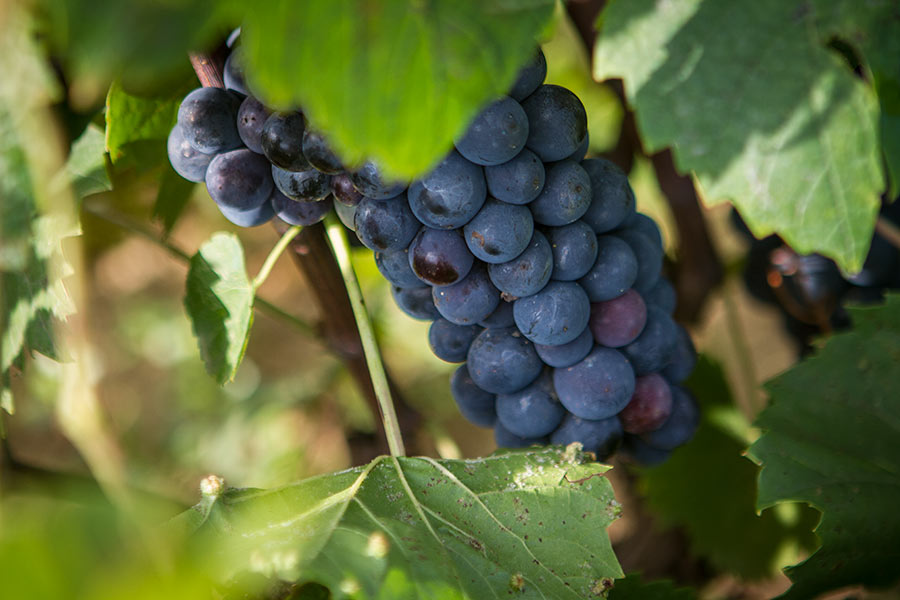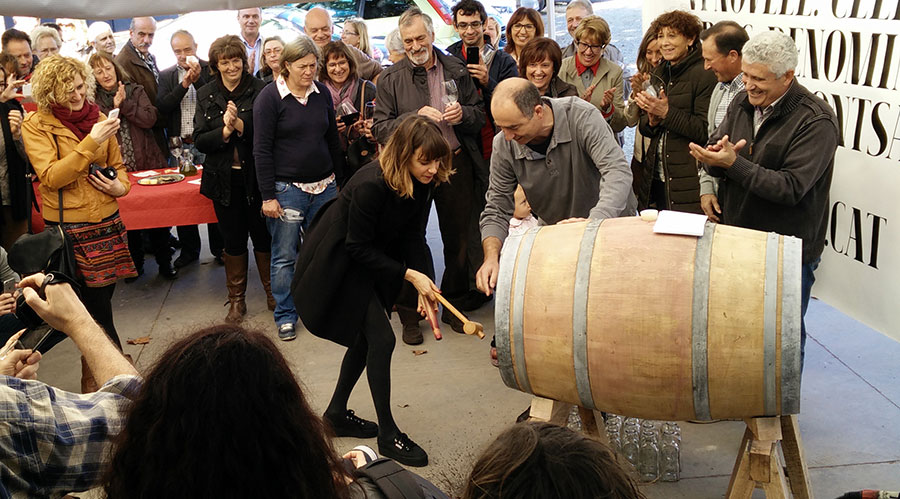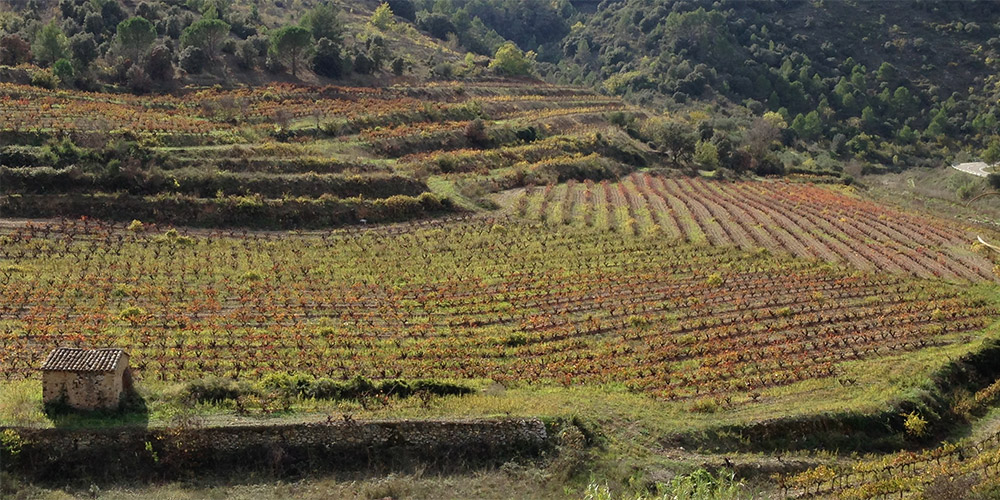If you happen to live just south of Girona and go to Sant Celoni often to take the regional train, then you, much like me, would take the GI-555 as it offers something of a toll-free shortcut from the N-II to the C-35. This is unless it’s clogged by semi trucks or local farmers thinking the same thing in which case, you just focus on the pretty trees that line the way.
Rather devoid of civilization, there is only one village along the road called, Les Mallorquines. Little more than a roundabout with a couple of houses next to it, you’d be excused if you missed the small vineyard at the start of it. I’d missed it several times until driving back from Sant Celoni at the end of last summer to glimpse the tops of the bush vines just over the crest of the small hill.
This happened at a point where I was looking around quite frantically to find some grapes to buy in Empordà in order to make a wine at home. These being old vines, I was quite naturally interested in them and one day popped in to the village to try and find out who was the owner of these vines by asking the locals. It turned out was a fellow named Joan Adroguer. An 86 year-old resident of the village, I finally caught up with him while he was working in his small garden and managed to talk him in to taking me on a tour of the vines one day.
 We met at his home and hopped across the road to stroll through this curiosity. You see, while they still grow a good deal of vines up in DO Empordà, finding any this far south into the Girona County is quite rare. While every farmhouse tended to have a small amount of them (where I live actually had 2ha) to make home wine, essentially all of them were torn out during the mid-20th century to plant more cash effective crops. This was a shame but understandable. The counties of Gironès, La Selva, and several others sit at an unfortunate crossroads of climates of being neither coastal nor continental. While they have very cold winters and very hot summers, they have massive humidity and lack the Tramuntana seen up in Empordà to cleanse the vines. Thus, even in good years you still get a lot of rot.
We met at his home and hopped across the road to stroll through this curiosity. You see, while they still grow a good deal of vines up in DO Empordà, finding any this far south into the Girona County is quite rare. While every farmhouse tended to have a small amount of them (where I live actually had 2ha) to make home wine, essentially all of them were torn out during the mid-20th century to plant more cash effective crops. This was a shame but understandable. The counties of Gironès, La Selva, and several others sit at an unfortunate crossroads of climates of being neither coastal nor continental. While they have very cold winters and very hot summers, they have massive humidity and lack the Tramuntana seen up in Empordà to cleanse the vines. Thus, even in good years you still get a lot of rot.
In shitty years like 2014, you get even more and Joan’s grapes weren’t in good shape. He told me had hit them with copper sulfate five times already when normally he only does it twice. Despite this there was still a lot of rot. Of course it affected some vines worse than others and this is due to this vineyard being a living museum of grape types in Catalonia. I could easily spot Carignan and Grenache, but there were a slew of others I hadn’t a clue about.
Joan’s father planted the vineyard some 90 years ago and just sort of used whatever he could get which was apparently everything. That and people were quite happy with doing “field blends” which is to say they picked all the different reds and whites at the same time to make the wine in one go. We try not to do that these days due to different ripening times for grapes but Joan still does.
From this little plot of grapes he makes 500l of wine each year which was apparently finished at the time I visited him. He was quite happy to sing the praises of his wine but it also meant that he had no interest in selling off these grapes. He also wasn’t sure what he was going to do with them as his son had no interest in working them anymore and I could see why as it’s a small little plot of grapes outside of a Denomination of Origin in a rather non-ideal climate. For the time being, Joan will continue making the wine and anyone passing by it on the GI-555 can glance off to the side and see this little tribute to viticultural history that I hope somehow doesn’t disappear.


